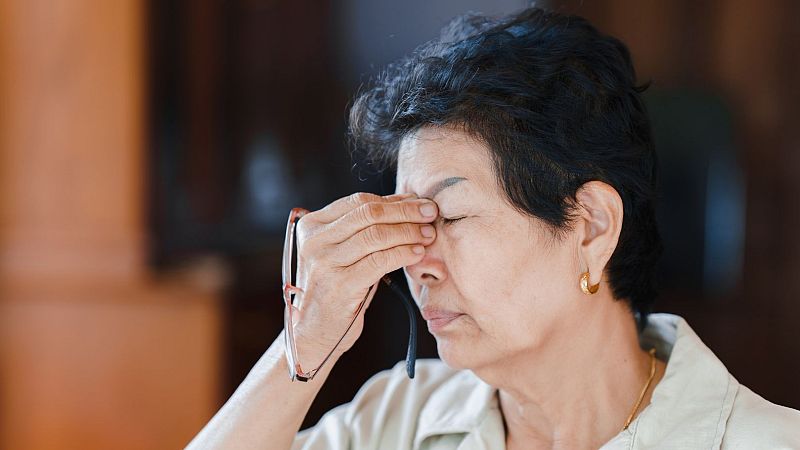Tiny eye implant restores eyesight for patients with incurable blind spots, trial finds

A tiny electronic eye implant is helping people with incurable vision loss to see again, according to a small new trial that has been hailed as a “breakthrough” in artificial vision.
The implant, which is placed under the eye’s retina and connects to a special pair of glasses, targets people with age-related macular degeneration (AMD), a common condition that causes loss of sight in the centre of people’s vision.
It can make reading and recognising faces difficult and typically affects people from the age of 50.
Many of the 38 elderly patients in the trial regained the ability to read letters, words, and numbers after using the device, according to the study, which was published in the New England Journal of Medicine.
“This study confirms that, for the first time, we can restore functional central vision in patients blinded by geographic atrophy” or advanced AMD, said Dr Frank Holz, the study’s lead author and chair of the ophthalmology department at the University Hospital of Bonn in Germany.
“The implant represents a paradigm shift in treating late-stage AMD,” Holz added in a statement.
All of the patients had geographic atrophy with dry AMD, which is a form of the condition that causes vision loss over time and cannot be treated.
They had only limited peripheral vision before having the device implanted at hospitals in five European countries. The patients were given special glasses that contained a video camera and enabled them to focus, zoom, and scan text or numbers.
The glasses processed these scenes and used near-infrared light to project them onto the implant, which then converted that light into an electrical signal that stimulated cells in the retina.
That process restored “the flow of visual information,” the study said.
Within a year, 84 per cent of the participants could read letters, numbers, and words with the artificial vision, and 69 per cent said they were generally satisfied with the device.
The device was developed by a French company, Pixium Vision, which went out of business last year. The US-based Science Corporation, which develops brain-computer interfaces (BCIs), bought Pixium’s assets and has applied to sell the device in the European Union.
The company said it hopes the device will be available in the EU next year, and that the current model could be offered to a subset of patients with advanced AMD and severe vision loss.
It is also working on a more advanced version of the device.
Today

